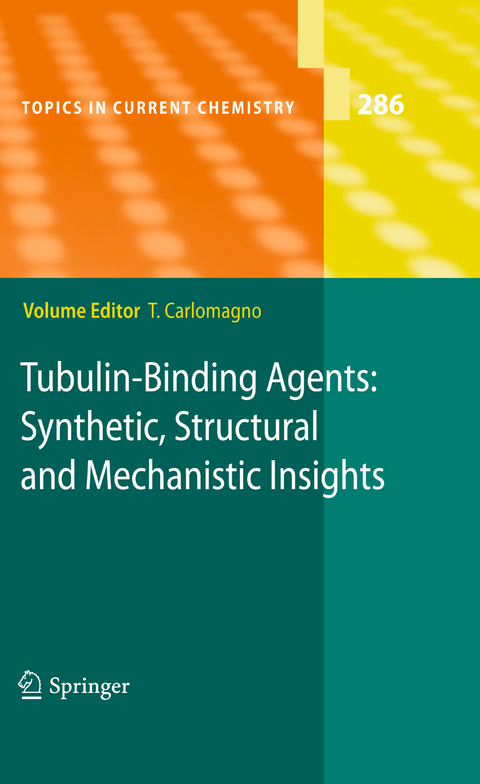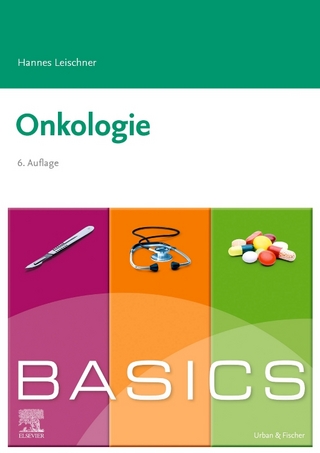
Tubulin-Binding Agents
Synthetic, Structural and Mechanistic Insights
Seiten
2014
|
2009
Springer Berlin (Verlag)
978-3-642-43594-2 (ISBN)
Springer Berlin (Verlag)
978-3-642-43594-2 (ISBN)
This series presents critical reviews of the present position and future trends in modern chemical research. It contains short and concise reports on chemistry, each written by the world renowned experts.
reviews. The SAR data are discussed in light of the structural information available for each agent. The second chapter focuses on the total synthesis of the marine sponge-derived polyketide discodermolide. A comprehensive survey of the synthetic chemistry efforts of several groups over a 14-year period is provided together with a compa- son of the different approaches. The third chapter describes a comprehensive study of the mechanisms of activity of microtubules stabilizing drugs. Thermodynamic, kinetic, structural and fu- tional data on microtubules stabilizing drugs are discussed in an interdisciplinary manner to generate a time-resolved picture of the interaction of the drugs with different tubulin forms. The fourth and fifth chapters review the efforts and achievements made in the characterization of the structure of the complexes of tubulin with microtubules stabilizing agents by NMR (Chapter 4) and EM (Chapter 5). Especially evident is the discrepancy of the results obtained for epothilones, where the two techniques deliver radically different structures of the bound drug. Both NMR and EM models are, however, able to explain a consistent set of SAR data. The authors of the two chapters discuss critically the advantages and limitations of each methodology.
reviews. The SAR data are discussed in light of the structural information available for each agent. The second chapter focuses on the total synthesis of the marine sponge-derived polyketide discodermolide. A comprehensive survey of the synthetic chemistry efforts of several groups over a 14-year period is provided together with a compa- son of the different approaches. The third chapter describes a comprehensive study of the mechanisms of activity of microtubules stabilizing drugs. Thermodynamic, kinetic, structural and fu- tional data on microtubules stabilizing drugs are discussed in an interdisciplinary manner to generate a time-resolved picture of the interaction of the drugs with different tubulin forms. The fourth and fifth chapters review the efforts and achievements made in the characterization of the structure of the complexes of tubulin with microtubules stabilizing agents by NMR (Chapter 4) and EM (Chapter 5). Especially evident is the discrepancy of the results obtained for epothilones, where the two techniques deliver radically different structures of the bound drug. Both NMR and EM models are, however, able to explain a consistent set of SAR data. The authors of the two chapters discuss critically the advantages and limitations of each methodology.
Macrolide-Based Microtubule-Stabilizing Agents Chemistry and Structure Activity Relationships.- The Chemical Synthesis of Discodermolide.- The Interaction of Microtubules with Stabilizers Characterized at Biochemical and Structural Levels.- The Tubulin Binding Mode of MT Stabilizing and Destabilizing Agents Studied by NMR.- The Tubulin Binding Mode of Microtubule Stabilizing Agents Studied by Electron Crystallography.- Microtubule-Destabilizing Agents: Structural and Mechanistic Insights from the Interaction of Colchicine and Vinblastine with Tubulin.- Molecular Modeling Approaches to Study the Binding Mode on Tubulin of Microtubule Destabilizing and Stabilizing Agents.
| Erscheint lt. Verlag | 6.11.2014 |
|---|---|
| Reihe/Serie | Topics in Current Chemistry |
| Zusatzinfo | XI, 331 p. |
| Verlagsort | Berlin |
| Sprache | englisch |
| Maße | 155 x 235 mm |
| Gewicht | 528 g |
| Themenwelt | Medizin / Pharmazie ► Medizinische Fachgebiete ► Onkologie |
| Medizin / Pharmazie ► Pharmazie | |
| Medizin / Pharmazie ► Studium ► 1. Studienabschnitt (Vorklinik) | |
| Naturwissenschaften ► Biologie ► Biochemie | |
| Naturwissenschaften ► Chemie ► Analytische Chemie | |
| Naturwissenschaften ► Chemie ► Organische Chemie | |
| Naturwissenschaften ► Chemie ► Physikalische Chemie | |
| Schlagworte | biochemistry • Chemistry • Destabilizing Agents • microtubules • Molecular Modelling • Organic Chemistry • Stabilizing Agents • synthesis • Tubulin-Binding Agents |
| ISBN-10 | 3-642-43594-7 / 3642435947 |
| ISBN-13 | 978-3-642-43594-2 / 9783642435942 |
| Zustand | Neuware |
| Haben Sie eine Frage zum Produkt? |
Mehr entdecken
aus dem Bereich
aus dem Bereich
Korrigierter Nachdruck 2020 mit allen Ergänzungen der UICC aus den …
Buch | Softcover (2020)
Wiley-VCH (Verlag)
42,90 €
Resilienz innovativ stärken : ein Praxishandbuch
Buch | Softcover (2023)
Kohlhammer (Verlag)
36,00 €


